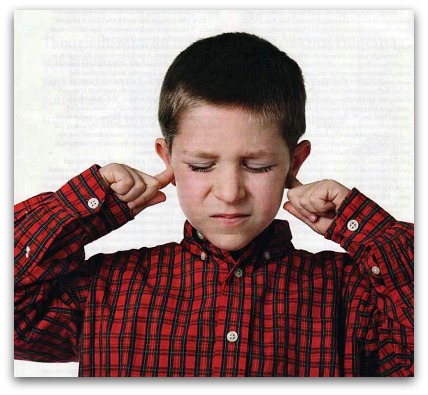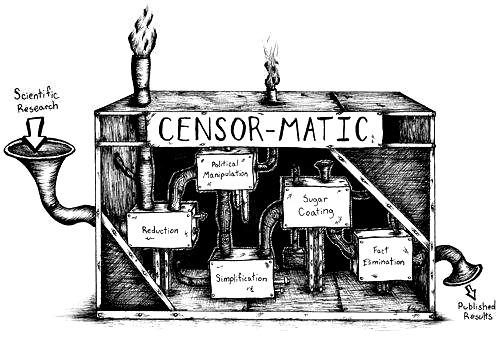American Psychological Assoc. spotlights Wind Turbine Syndrome
Aug 15, 2011
“Silence Please!”
“Psychologists are increasing awareness of the harmful effects noise has on cognition and health”
—Amy Novotney, Monitor on Psychology, July/August 2011, vol. 42, no. 7, pp. 46-49 (Note: The Monitor on Psychology is a publication of the American Psychological Association.)
·
We’ve all been annoyed by a neighbor’s late-night partying or early-morning lawn mowing. But it turns out that living in a noisy neighborhood particularly one plagued by train horns blaring or airplanes overhead—is more than exasperating. It might actually be deadly, according to a report released in April by the World Health Organization and the European Commission’s Joint Research Centre.
A steady exposure to “noise pollution;’ the report concludes, may lead to higher blood pressure and fatal heart attacks. The report analyzed a large number of epidemiological studies, most of which were conducted in Europe.
The report also confirmed what several psychologists have known for decades: Chronic noise impairs a child’s development and may have a lifelong effect on educational attainment and overall health. Numerous studies now show that children exposed to households or classrooms near airplane flight paths, railways or highways are slower in their development of cognitive and language skills and have lower reading scores.
“There is overwhelming evidence that exposure to environmental noise has adverse effects on the health of the population,” the report concludes, citing children as particularly vulnerable to the effects of chronic urban and suburban racket.
As air traffic increases worldwide and politicians consider building noise-producing wind turbines in more residential neighborhoods (see “Noise isn’t always loud,” below), the negative effects of noise will only continue to grow unless more is done to abate it, says environmental psychologist Arline Bronzaft, PhD, of the City University of New York. Her now-classic study from the 1970s was among the first to report the harmful effects of subway noise on children’s learning, and she has advised four New York City mayors on noise policy. New noise research in the United State has been scarce, however, since nearly 30 years ago federal funding for noise pollution research was cut after the U.S. Environmental Protection Agency’s Office of Noise Abatement and Control was eliminated during the Reagan administration . . . (click here to continue reading from the source).
·
Noise isn’t always loud
Another spate of psychological research is exploring the psychological and health effects of quieter—albeit constant—noise from wind farms. While these turbines are typically many decibels lower than the noise emitted by busy city traffic, power lawn movers or leaf blowers, sounds don’t have to be loud to be disturbing or to decrease quality of life, says Bronzaft.
“A dripping faucet may not measure that loud, but it sure can keep someone awake,” says Bronzaft, who has testified on the hazards of noise to government and health organizations in the United States and Canada and served as an expert witness in court cases on wind turbine noise.
Since the technology is still relatively new, a strong link between wind turbine noise and impaired human behavior or performance has yet to be proven—and the lack of federal funding means that research is unlikely to remedy this anytime soon.
Yet several small case studies and observational interviews have found an increase in sleep disturbance, psychological stress and headaches among those who live near the structures, according to New York pediatrician Nina Pierpont, MD, PhD.
Pierpont documents the individual experiences of families in Canada, Europe and the United States who live within several miles of the windmills in “Wind Turbine Syndrome: A Report on a Natural Experiment” (2009), and advocates for more research on the health effects before additional harm is done.
Yet some experts, including Robert J. McCunney, MD, a staff physician at Massachusetts General Hospital, argue that to establish a better connection between wind turbines and health, an individual’s health status must be studied before and after the windmills are installed [Pierpont in fact did this in her report; it’s called a case cross-over study—Editor], and the research should be peer reviewed [Pierpont’s book was in fact peer reviewed—Editor].
In addition, in 2009, a panel of independent experts [Hired by Big Wind, the members of this panel were hardly “independent” and, although they may have been generic experts in their respective disciplines, they were certainly not experts in this inquiry. Not one of them had ever interviewed a Wind Turbine Syndrome victim and, furthermore, not one of them had read Pierpont’s book before trashing it. “Experts” don’t behave this way—Editor] in public health, audiology and medicine commissioned by the American and Canadian Wind Energy Associations looked at peer reviewed studies on the health effects of wind turbines [They found no “peer reviewed” studies because—drum roll, please!—the recognition of the syndrome being so new, no one had published on it, except for Pierpont, and they blew her off without reading her book—Editor] and found that while some people might be annoyed by the “swish, swish” sound of the windmills, no medical basis existed for the health complaints that often arise near large wind-farm projects [Precisely the conclusion one would expect from a “study” commissioned and paid for by the two big wind energy associations—Editor].
“The sounds emitted by wind turbines are not unique,” panelists, including McCunney, contend in their review. “There is no reason to believe, based on the levels and frequencies of the sounds and the panel’s experience with sound exposures in occupational settings, that the sounds from wind turbines could plausibly have direct adverse health consequences.” [Click here to read Pierpont’s blistering critique of McCunney’s attempt at science—Editor.]
Still, Bronzaft’s efforts- along with a continued focus by psychologists around the world on noise pollution research and on teaching psychology students about the potential negative effects of noise- can help to increase society’s understanding of how to help abate chronic noise.
—A. Novotney [Note to Ms. Novotney: Why didn’t you contact Dr. Pierpont and interview her? You interviewed McCunney—why not Pierpont?—Editor.]
»»»»»»



Comment by Preston McClanahan (Rhode Island) on 08/15/2011 at 5:45 pm
Noise & vibration are the most damaging effects from wind turbines to people living too close. Property value and the money scam are a close second.
I liken this vibration to living inside a stringed musical instrument (your house). When the string is plucked (the wind turbine blades are turning), the sound vibrates (turbine vibration is produced) inside the music box (inside your house) and the sound is produced (and you get hit with WTS).
My sons and I play stringed instruments

.
Comment by BARRY FUNFAR (Falmouth, MA) on 08/16/2011 at 1:17 am
My problem with wind turbine noise has nothing to do with my house, though the sound is loudest directly in back of my home even though my backyard extends another couple of hundred feet closer to the guilty turbine. My body is my problem with the sound, causing a build-up of anxiety that centers in my chest. This results in a multitude of detrimental health effects.
I have been driven to hole-up inside my house, whereas in the pre-turbine days I spent nearly all of my home time in my garden. This is to avoid wind turbine noise, which has had an increasingly negative effect on me as my exposure has been prolonged.
Some of us absolutely cannot live a decent life with these machines too near us.
Comment by Sue Hobart (Falmouth, Mass.) on 08/18/2011 at 10:56 am
Having “lived” the past year plus in the wake of a 1.65 megawatt beast called NOTUS, calls for a redefinition of the meaning of “living.”
Every bone and cell in my body tells me on a daily basis that it’s not safe here and will not last long here.
Granted, I am and have always been subject to an overly fine-tuned body in terms of my environment. I am the canary for the coal mine… but that is not by choice but by makeup.

.
.
Homes cannot pick up and leave. So don’t put people in this position… The facts are known and ignored for $$$$$, but this will be the asbestos game of this decade… resulting in lots of backlash in the future…
Unfortunately, I am the unwilling test case.. buzz buzz buzz ziz ziz… gak